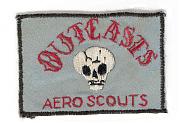Ski, I'd say its a question of having enough SOF, and how expensive it is to grow SOF capabilities that are more then just numbers. Our SOF are executing a growing number of DA missions that require time and effort to train and plan, but are also so important (HVT) that to increase the margin of success we have assigned them to a SOF unit. FID/Advisory missions also take resources and are also growing. We can't grow SOF fast enough or big enough with enough QA/QC to ensure we get relevant SOF capabilities so you are left with having conventional forces doing parts pieces to make up the delta, or not doing the missions at all - its a tough choice. A SOF soldier is a huge investment - a very worthwhile one, but a big investment if we are talking about people. Having said that, it would seem a lot more jobs feel more like "special" or "irregular" and less like "conventional".
On that note, I'd point out that serving as an advisor offers a pretty good investment strategy. All the qualities that are emphasized as leadership traits, and the skill sets we say we need such innovation, mental agility, flexibility, etc. are cultivated on advisory duty. It was on par with CMD as both the most professionally rewarding and professionally influencing assignment I've had. It fundamentally altered the way I view training, equipping, and fighting because it afforded me another perspective of the enemy I had not had. It also offered me immersion in another culture under fire - important I think since we fight mostly away games. The benefits of having as many soldiers afforded this opportunity I think cannot be overstated, as they rotate back into the force they will bring the experience of how indigenous security forces deal with problems from a long term perspective vs. a CF unit rotation. This is critical to understanding long term reasons for conflict and identifying and solving potential problems we might create prior to them having an adverse effect on operations. It also helps unit CDRs understand when something is really an operational problem vs. an operational condition. Further it forges ties at the grass roots which will pay off long after an advisor leaves for home.




 I was writing while you were posting. I did not know the history behind it - seems like we always manage to short sheet ourselves. Regards, Rob
I was writing while you were posting. I did not know the history behind it - seems like we always manage to short sheet ourselves. Regards, Rob







Bookmarks